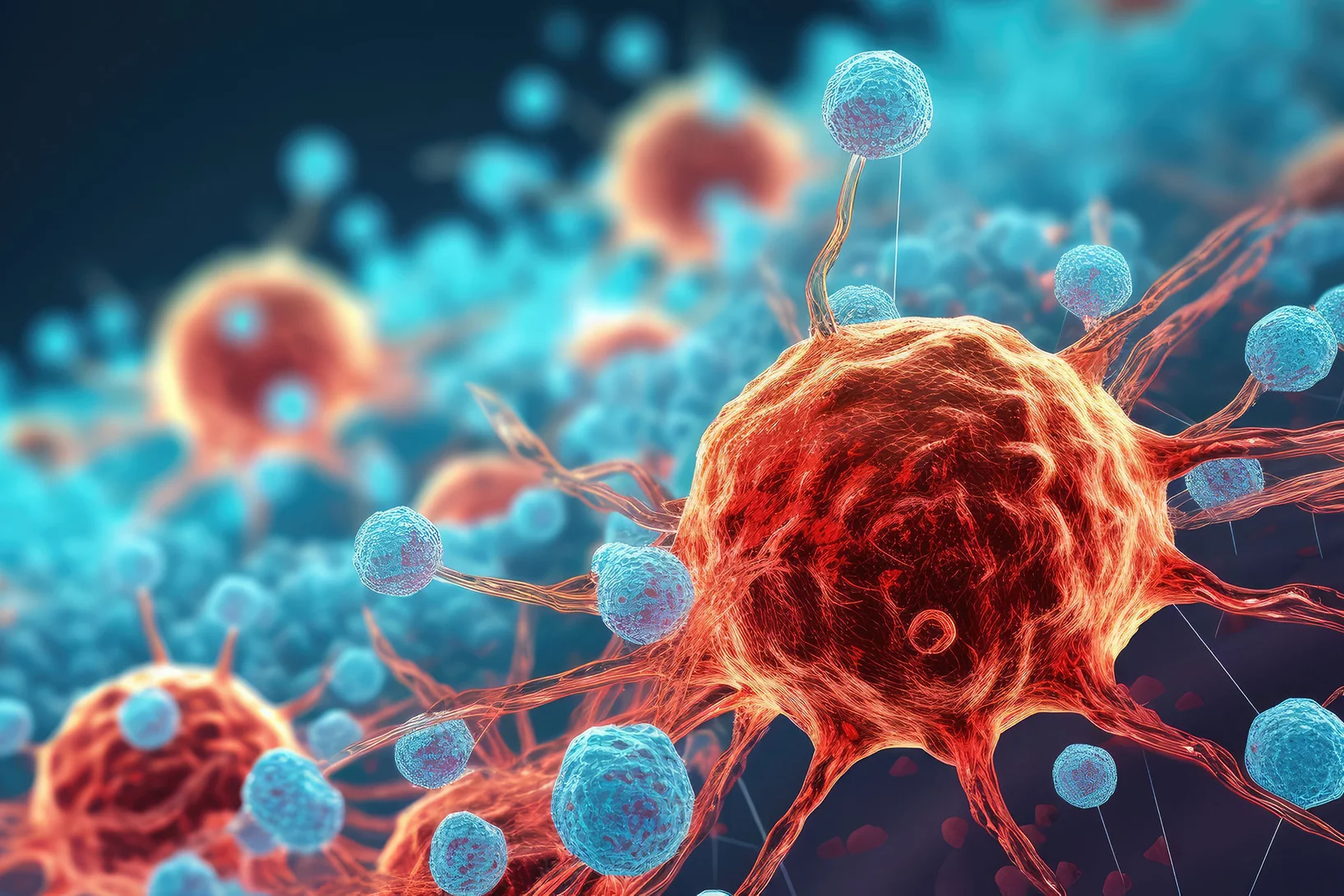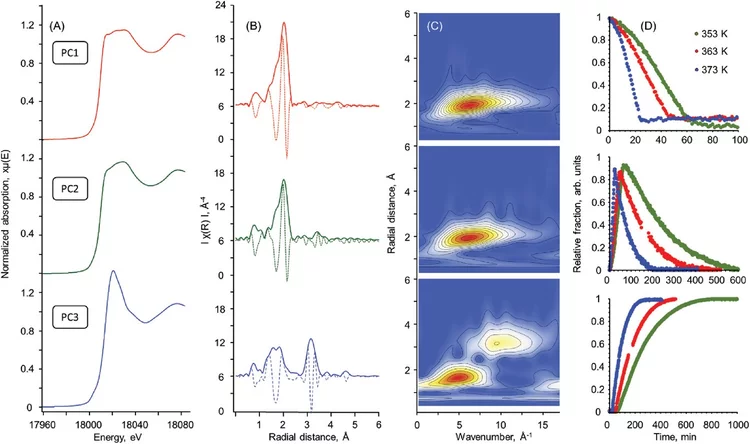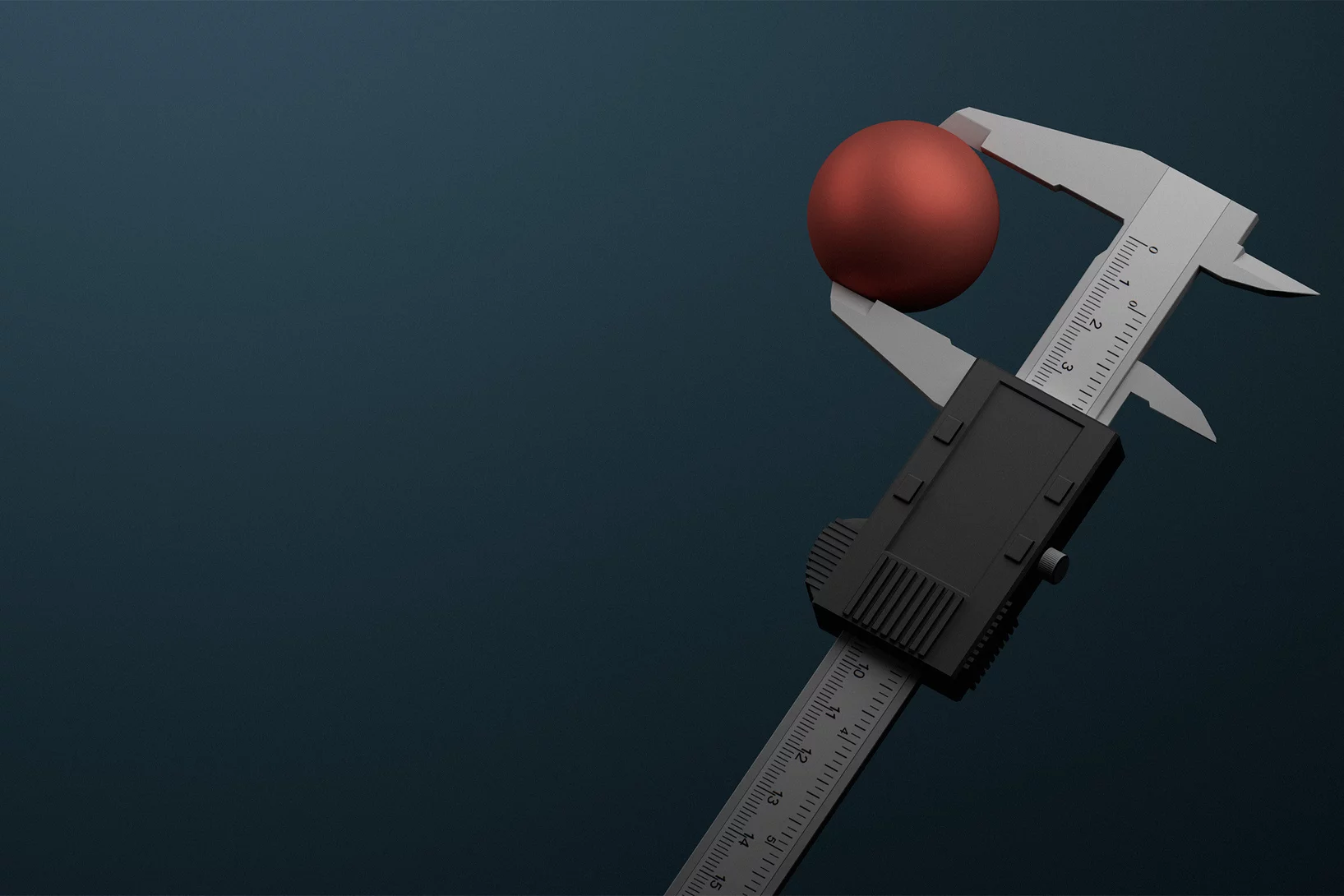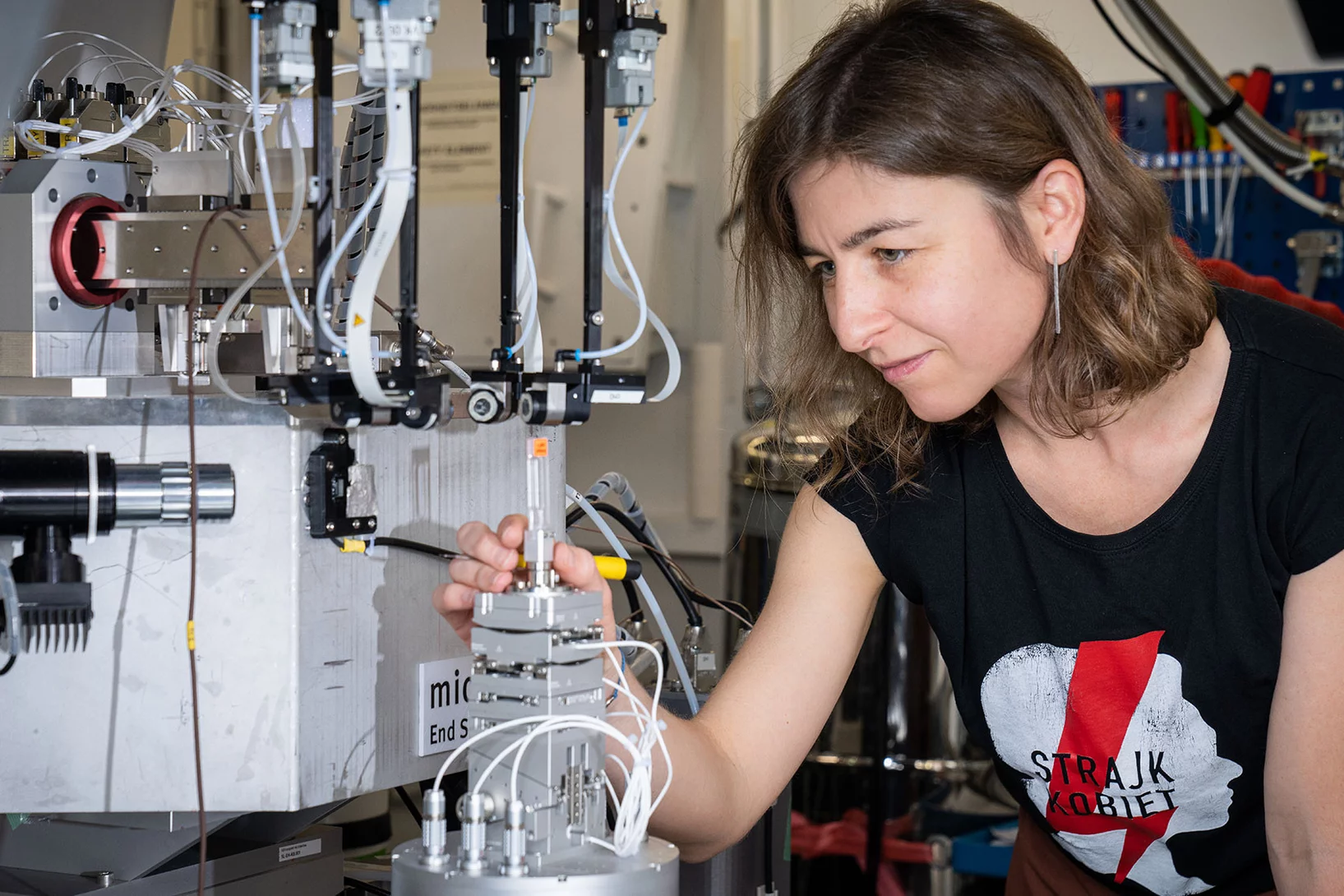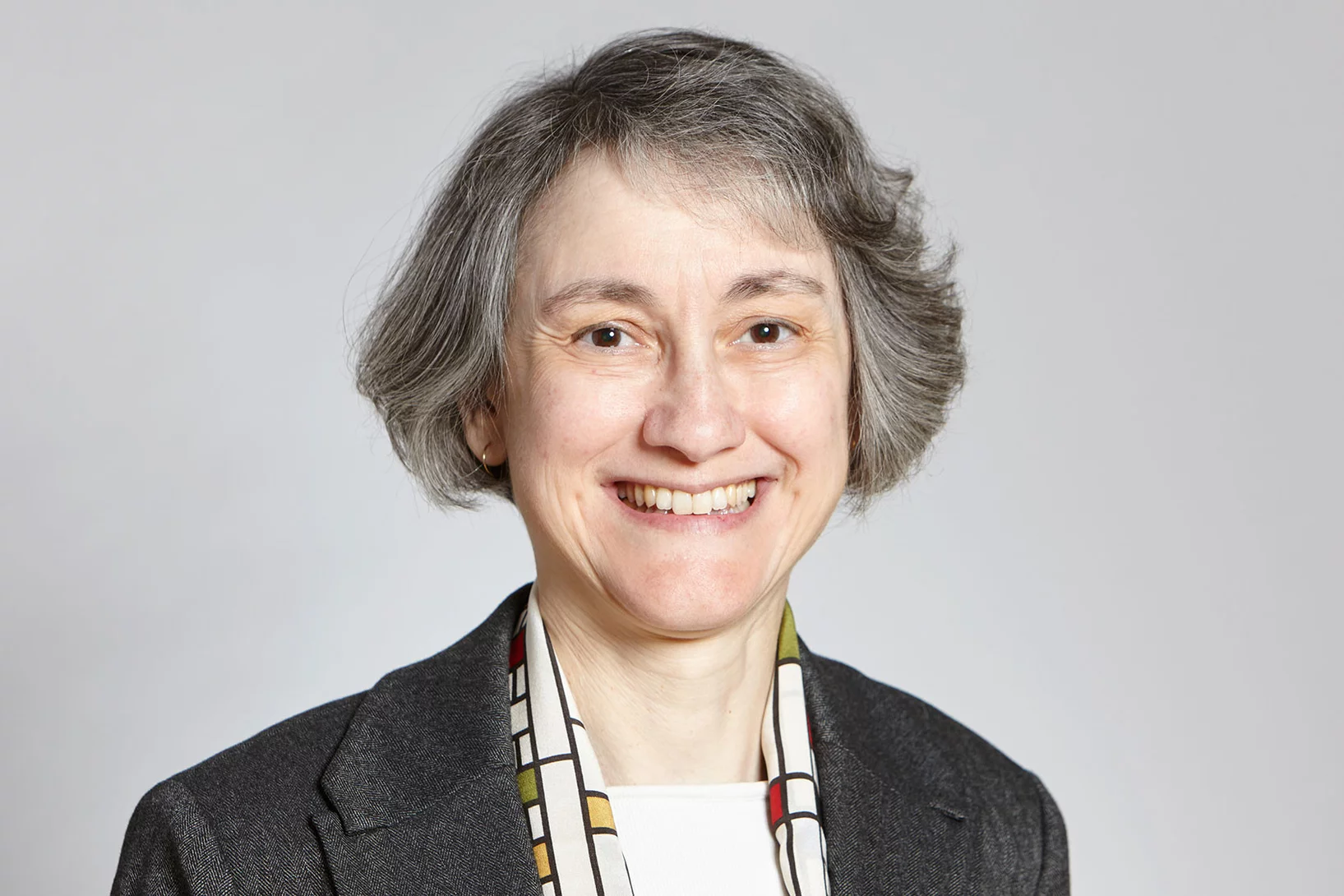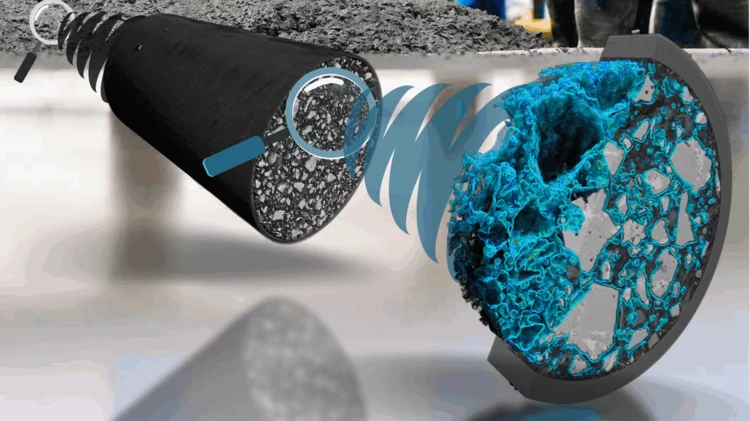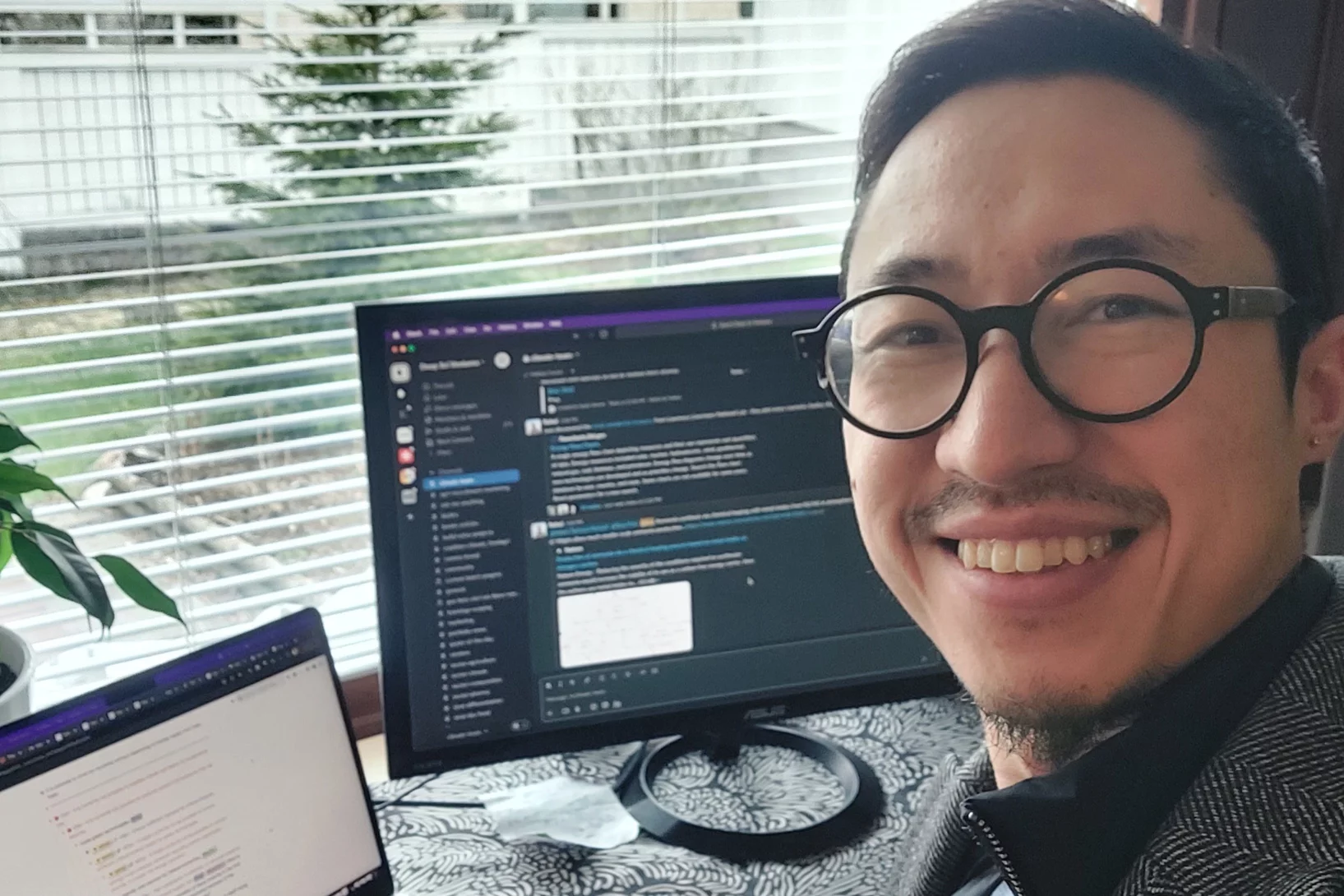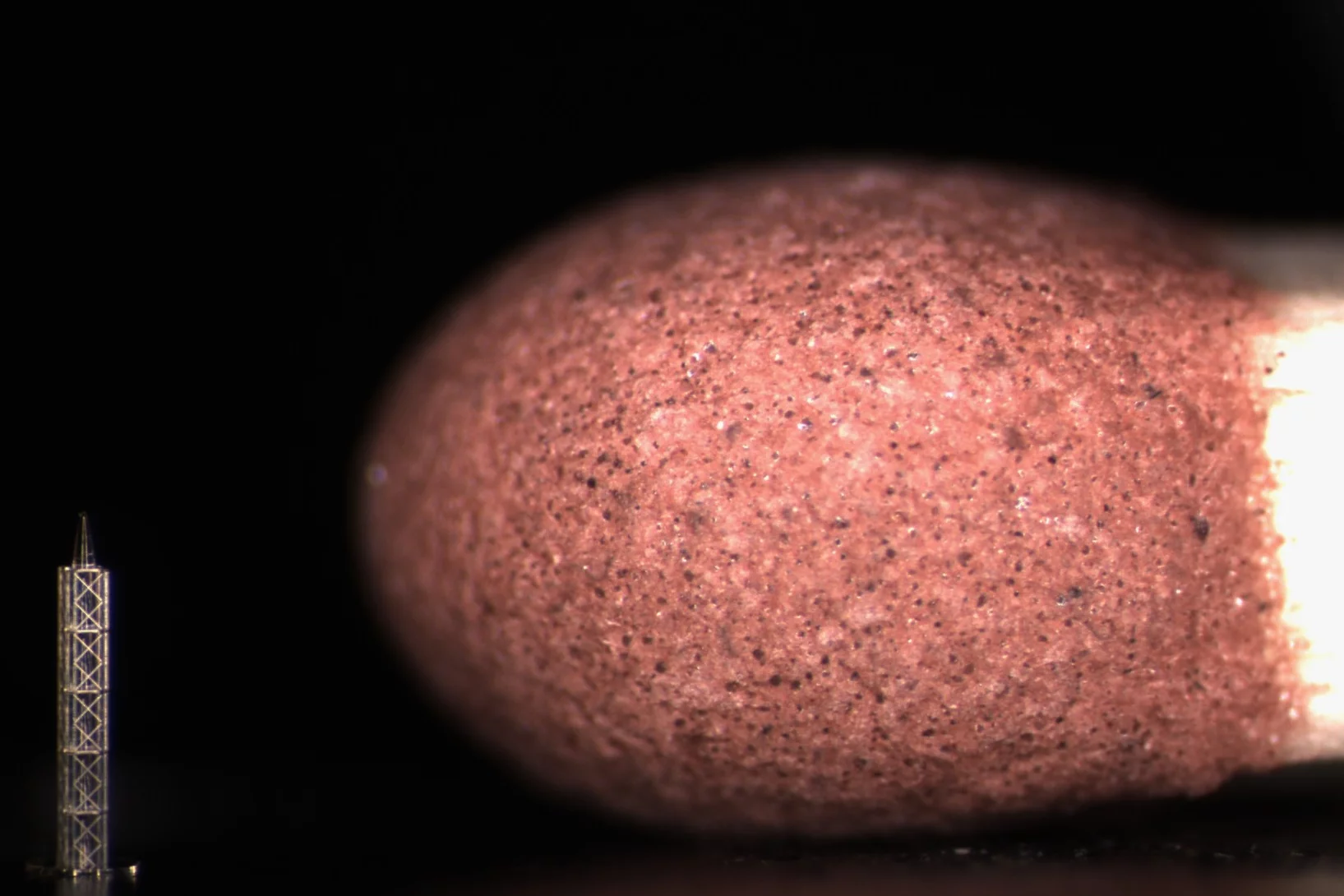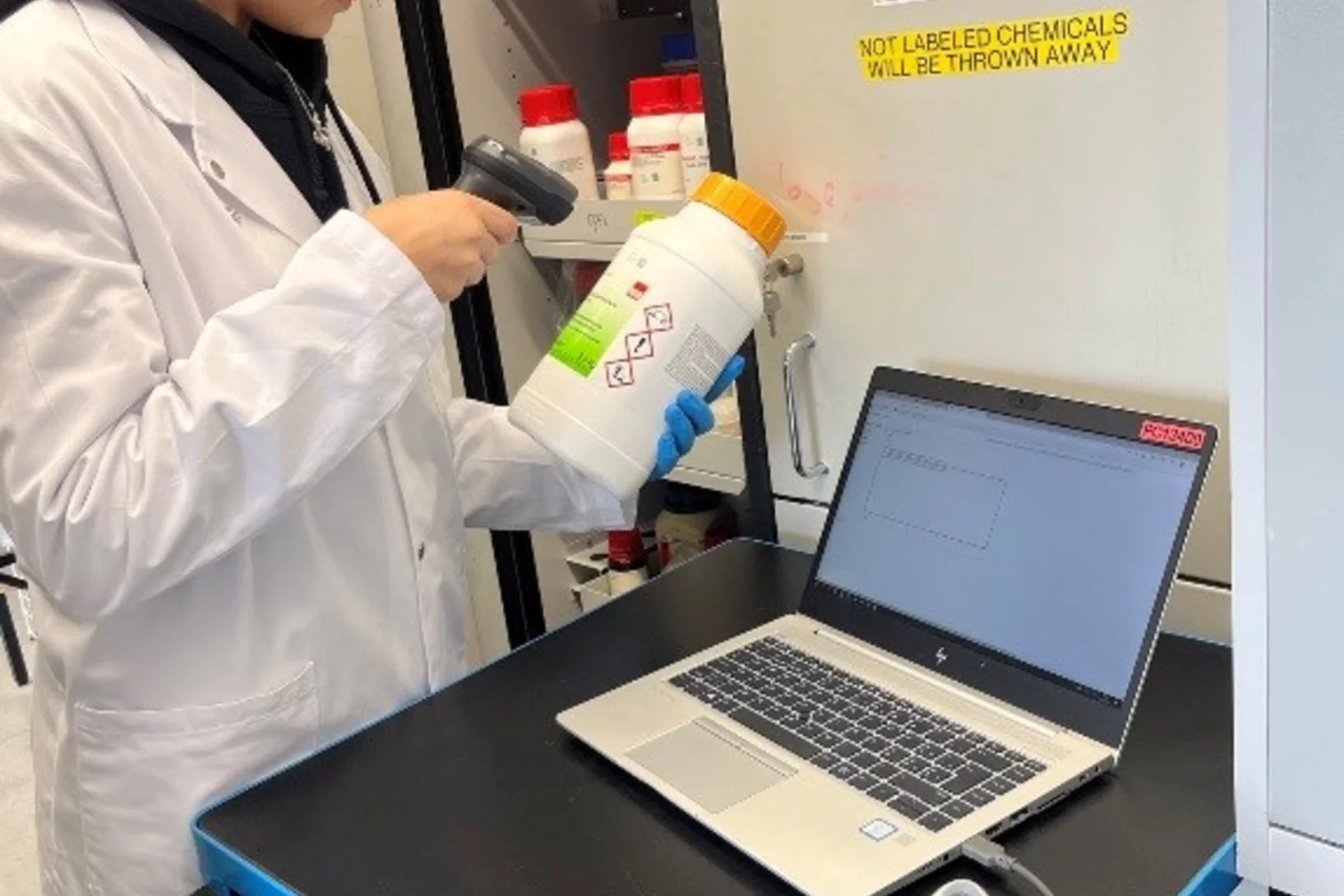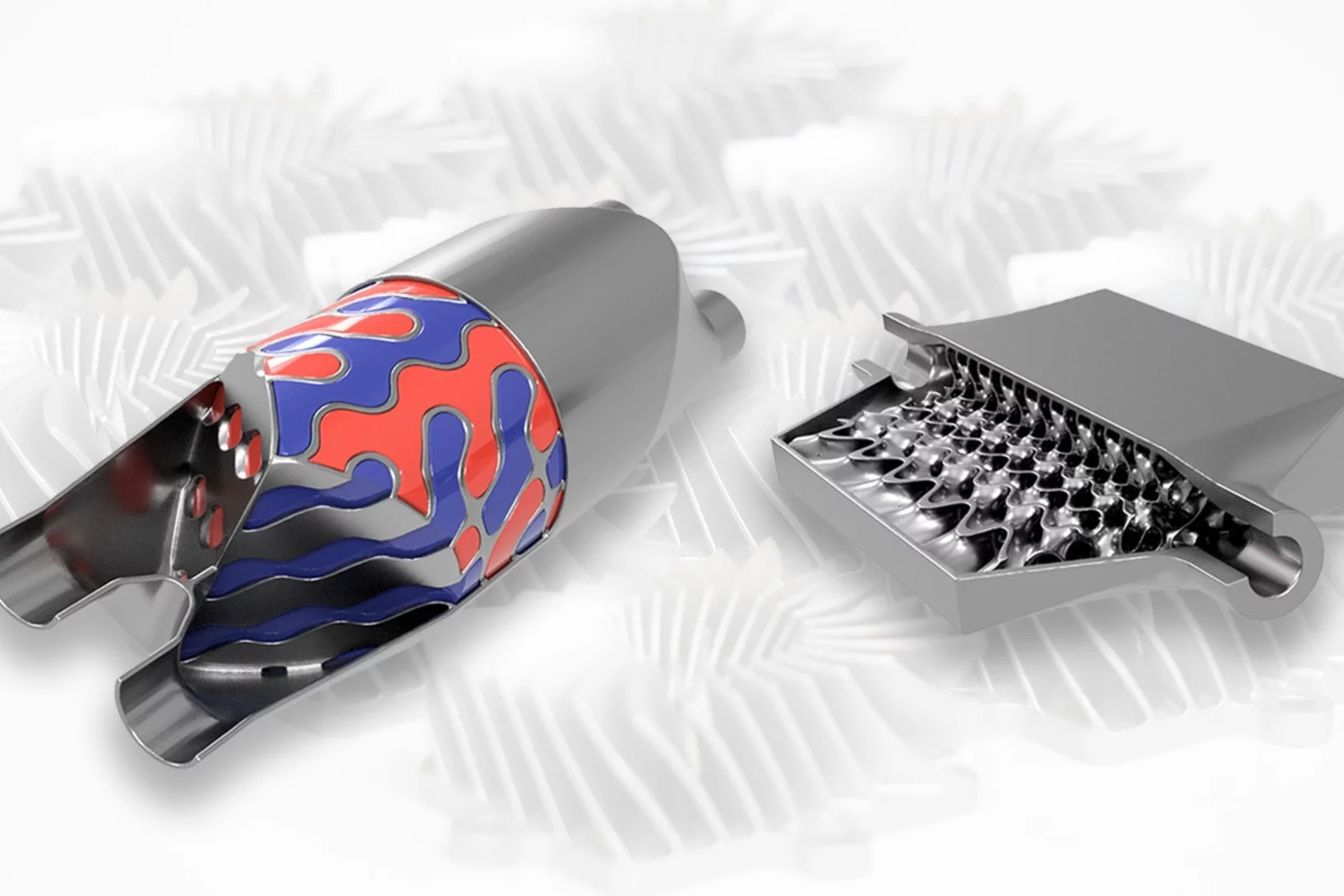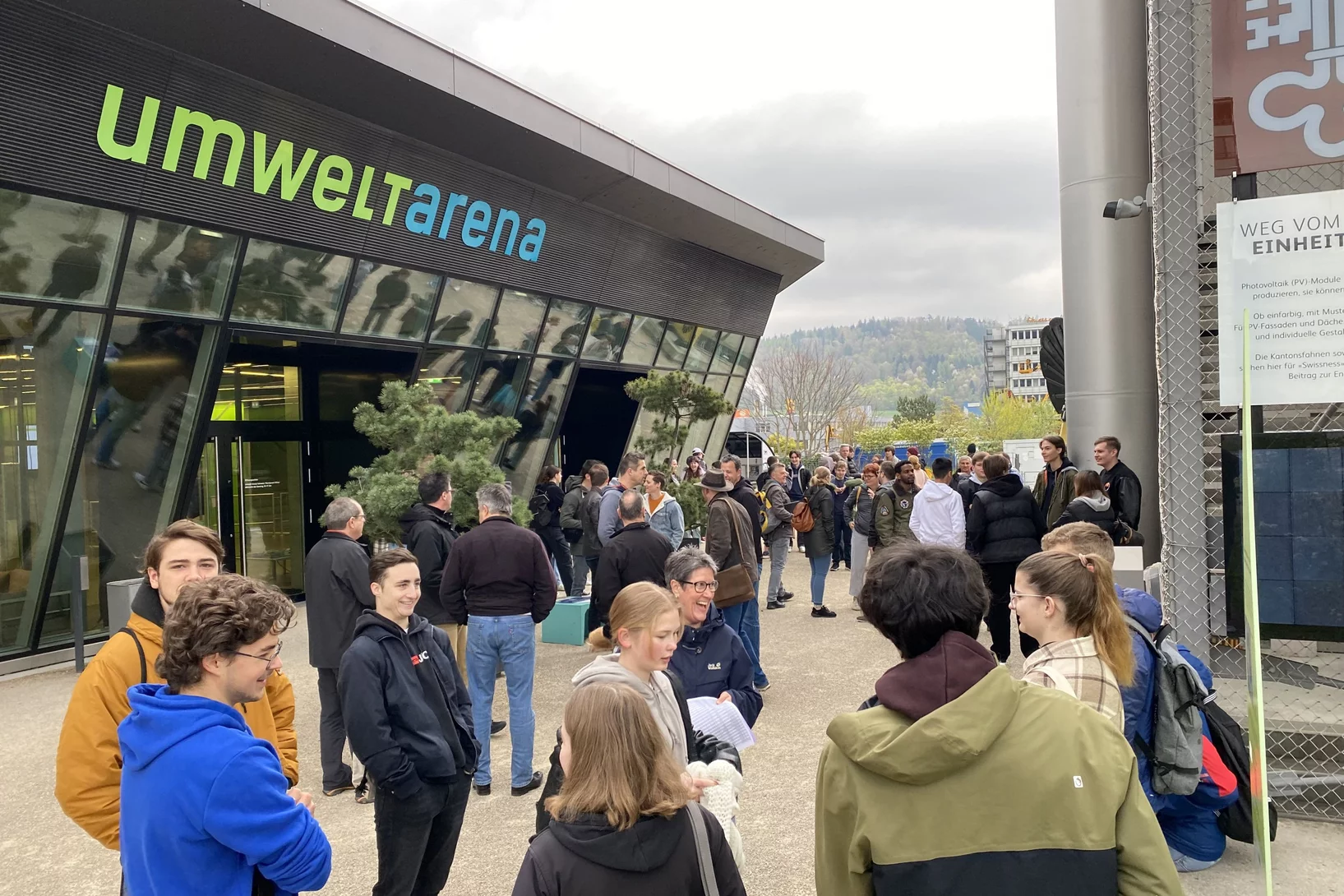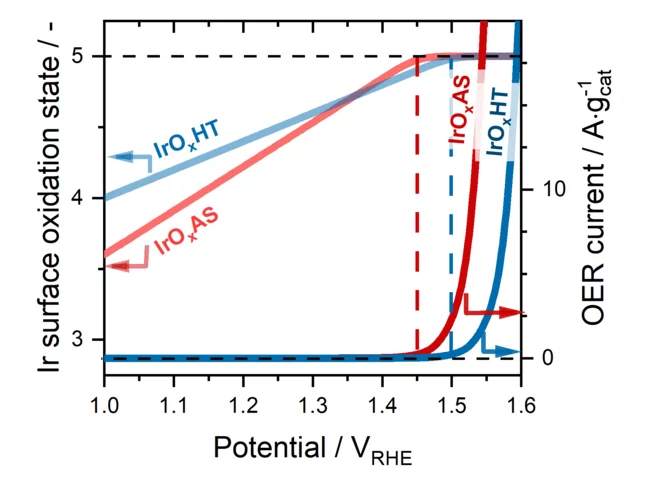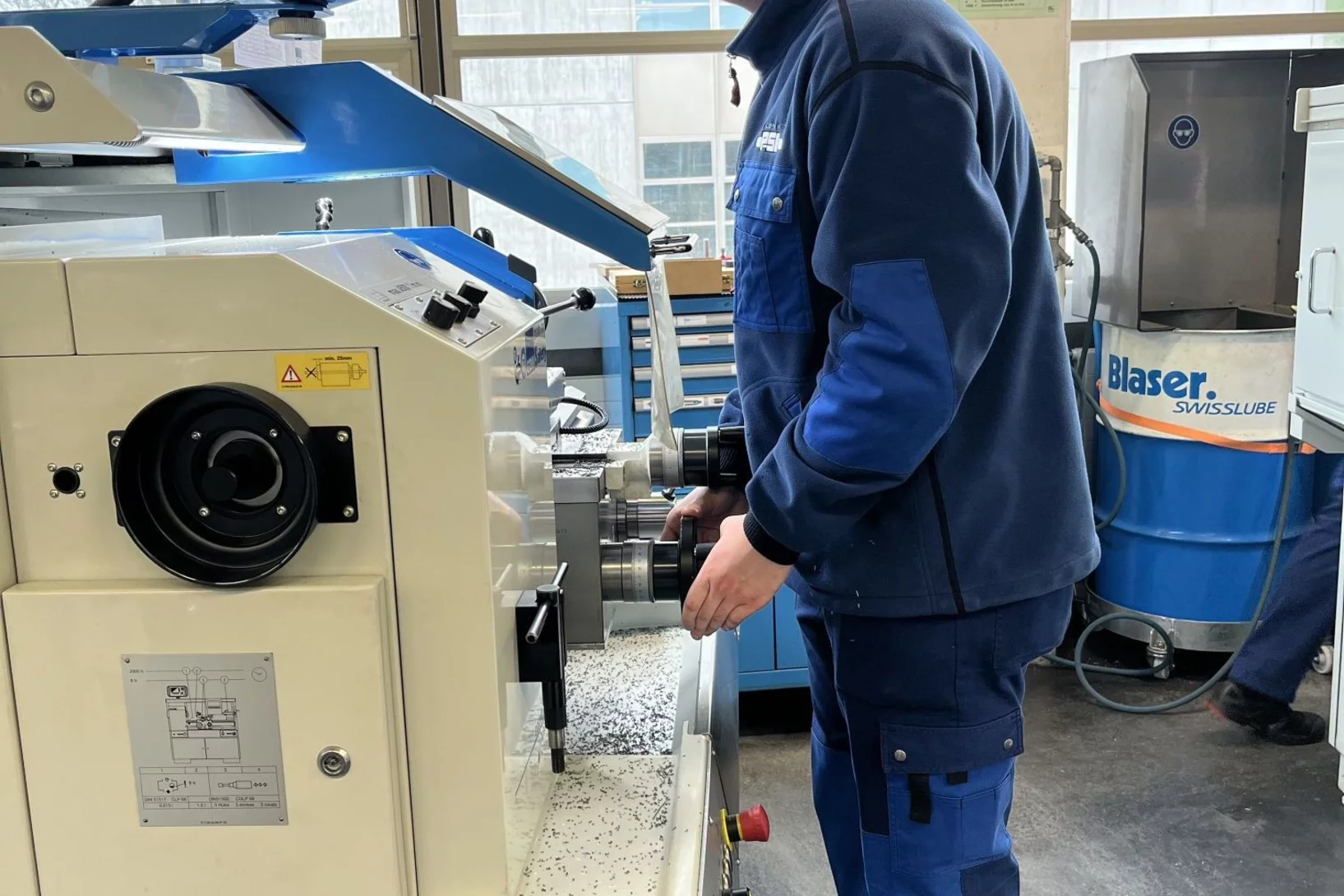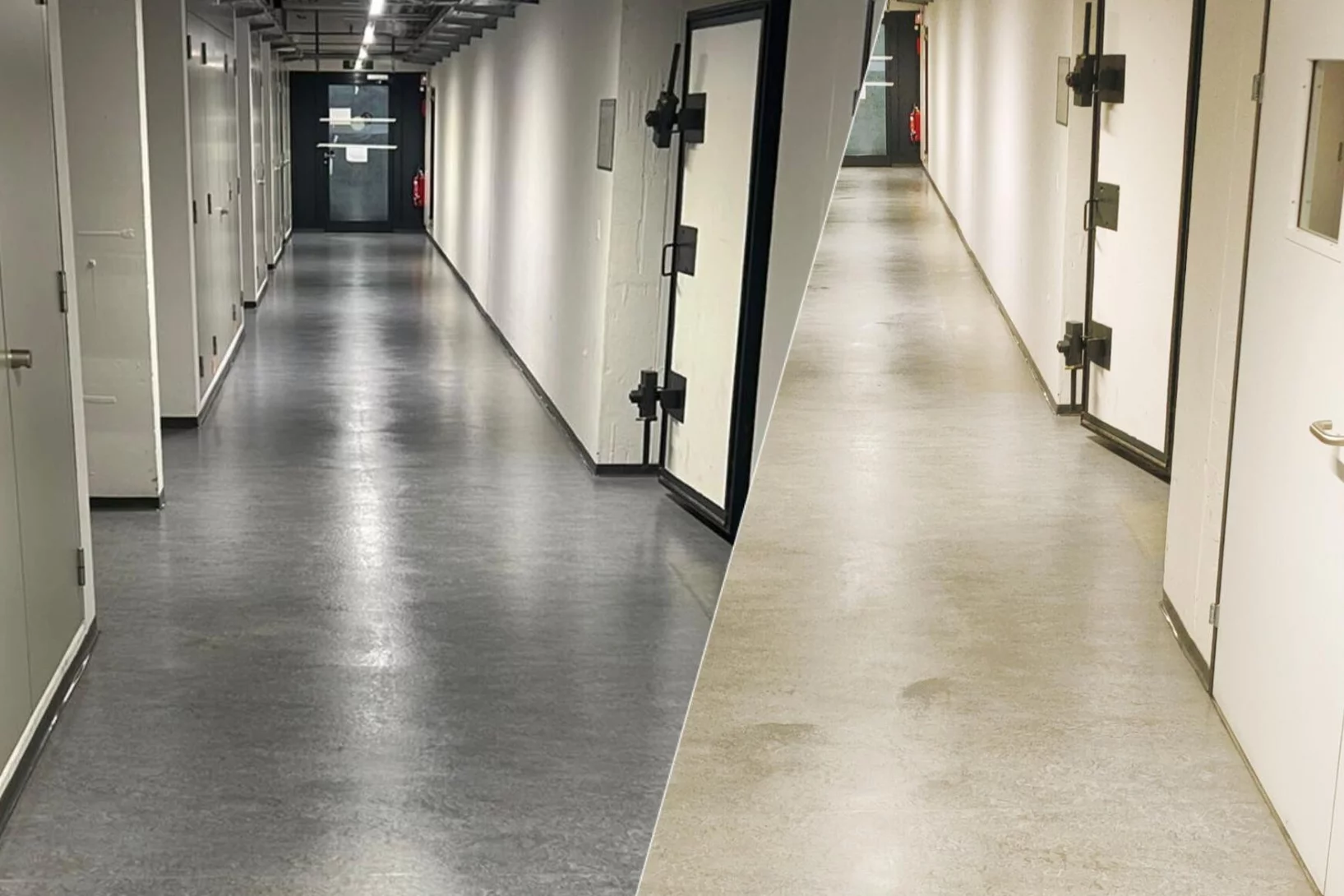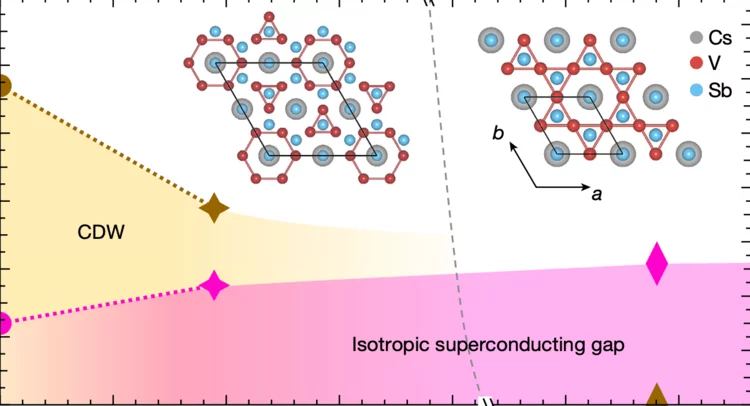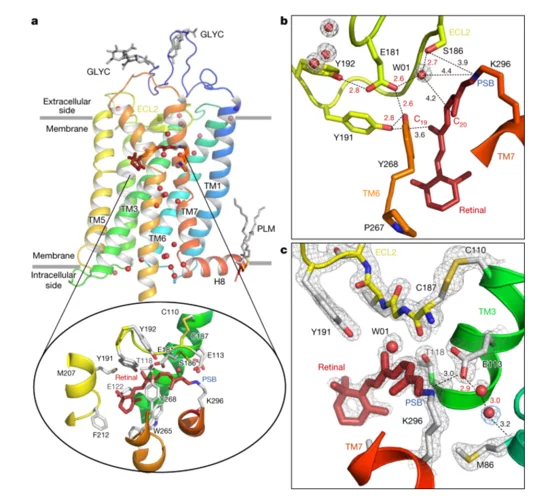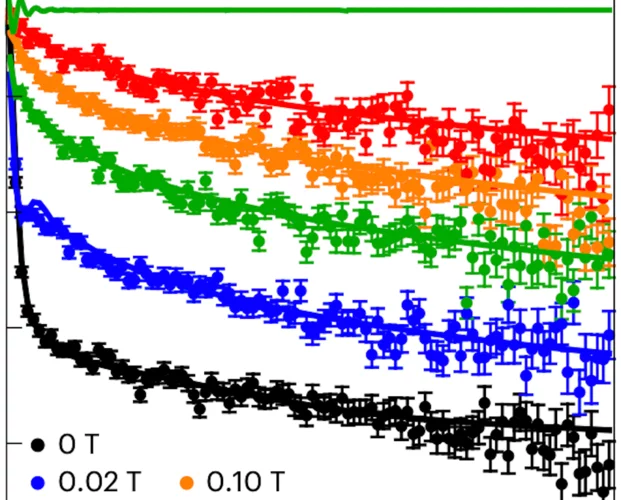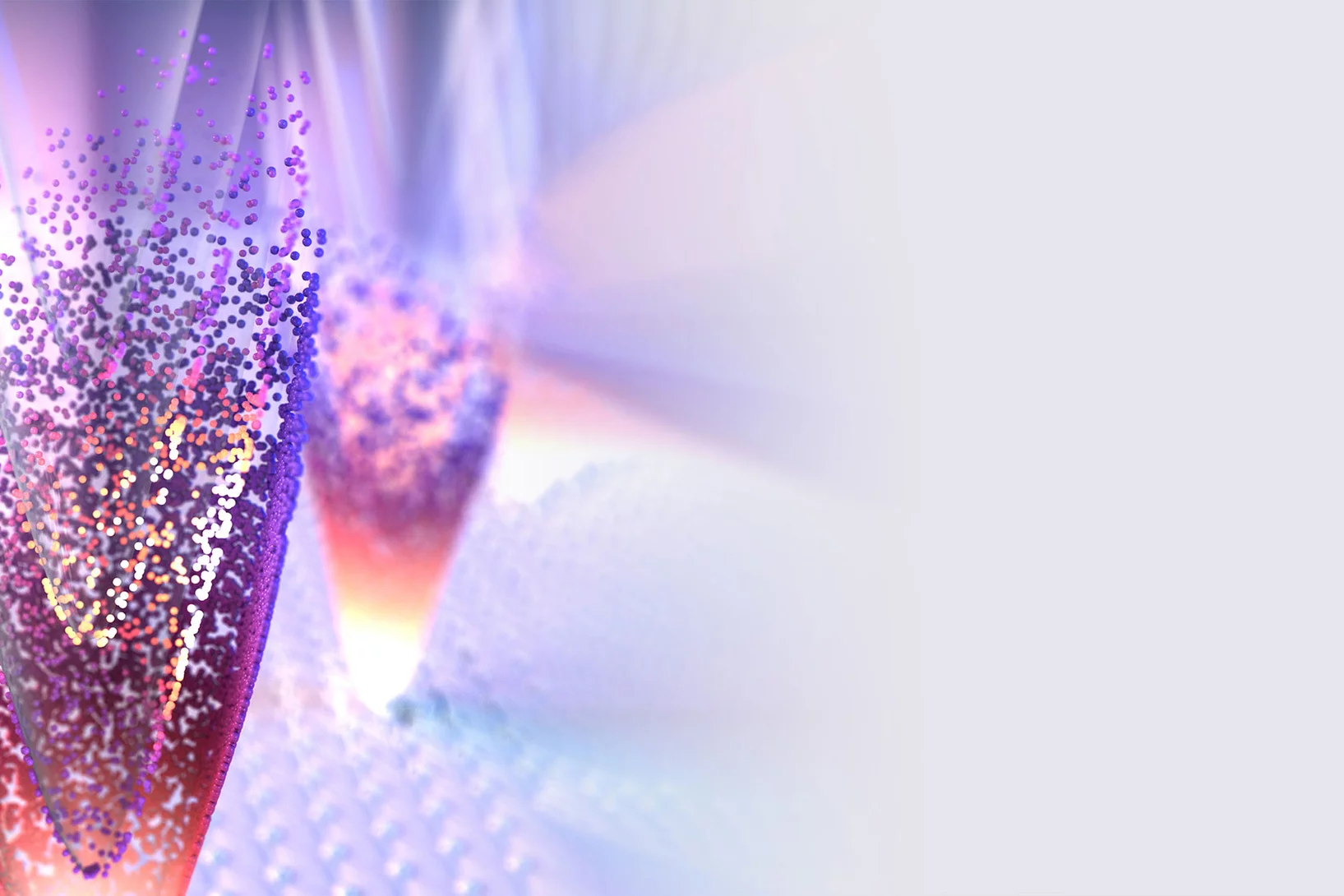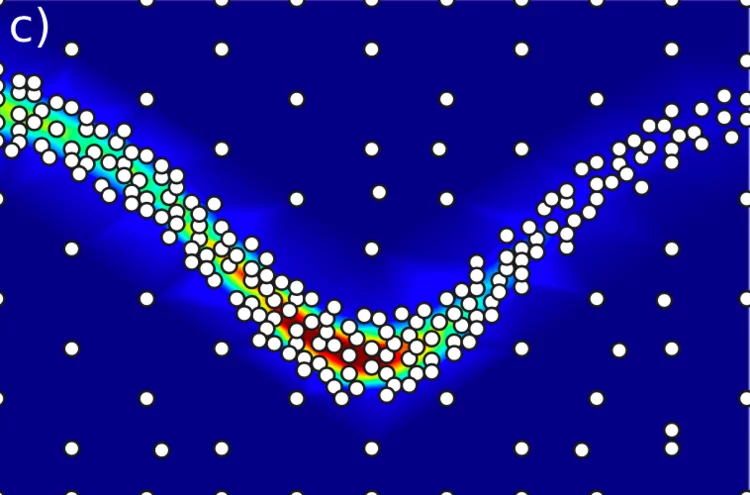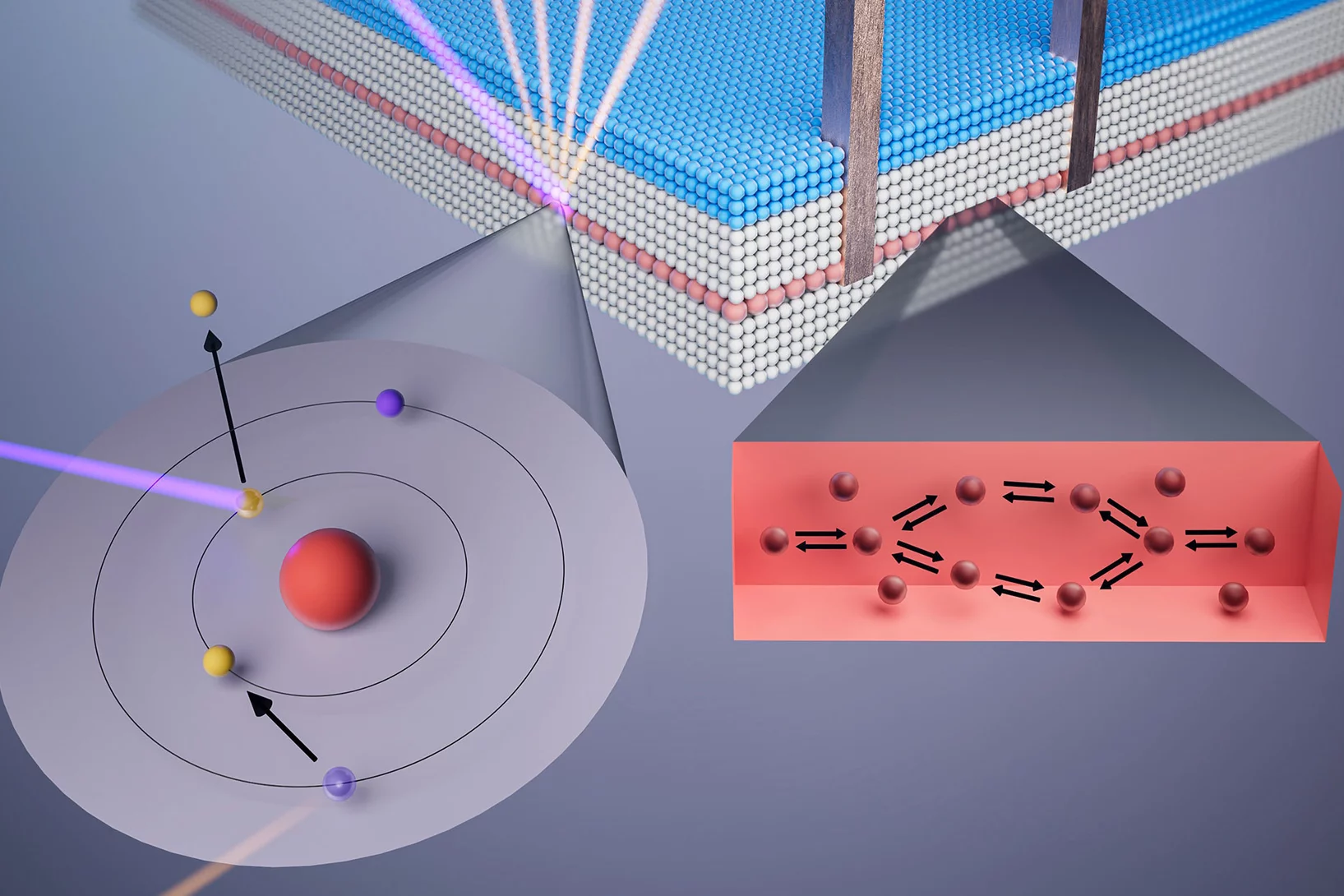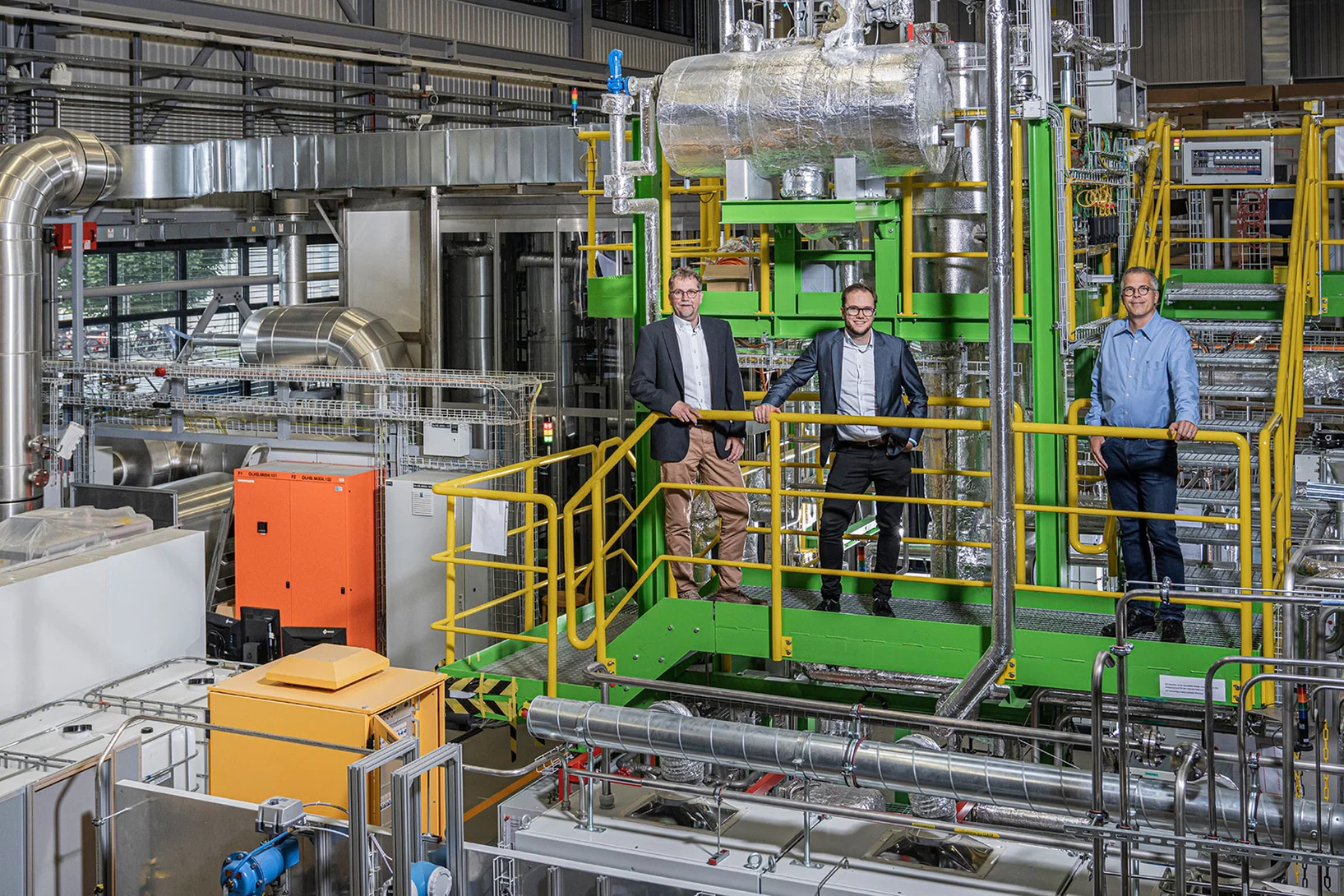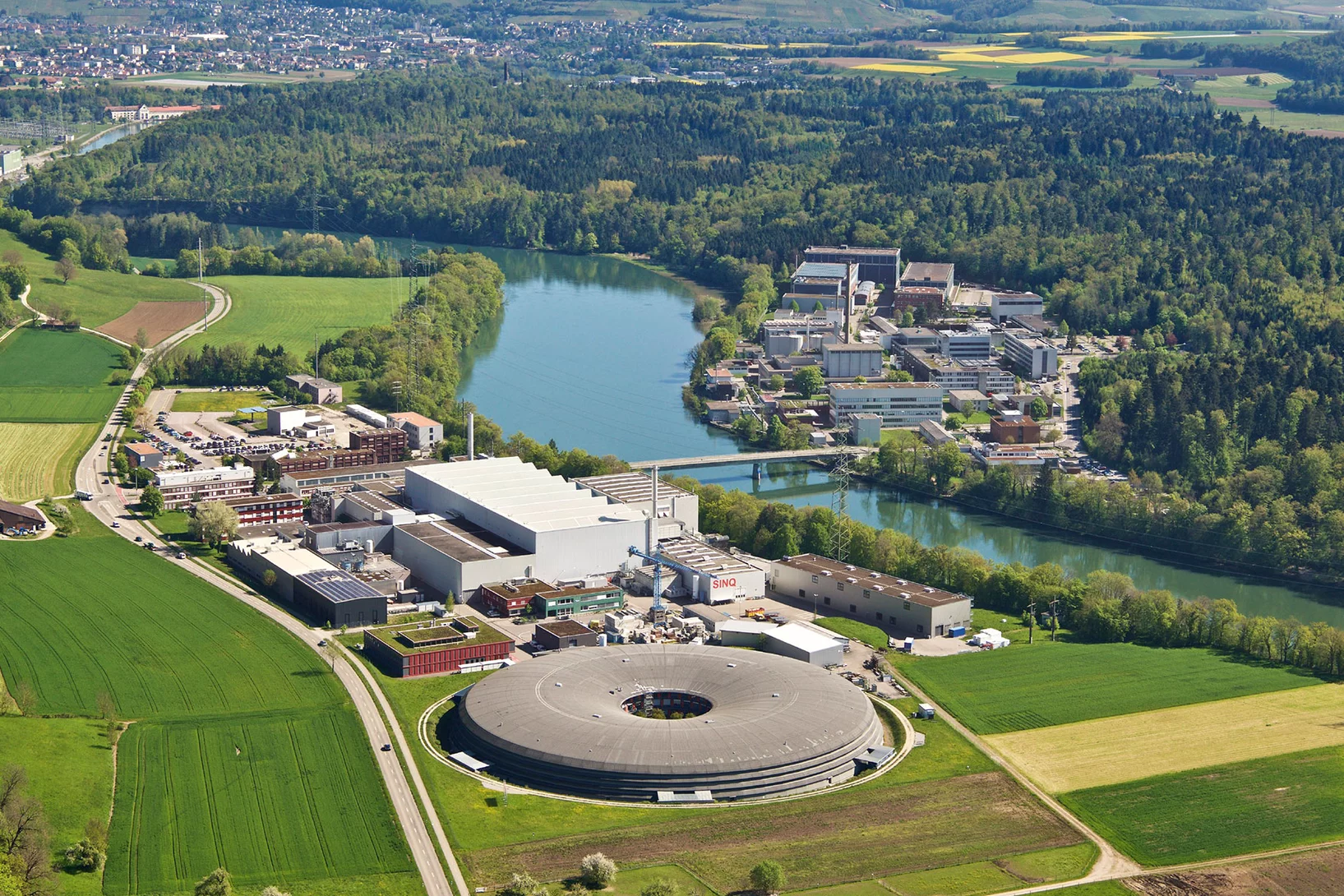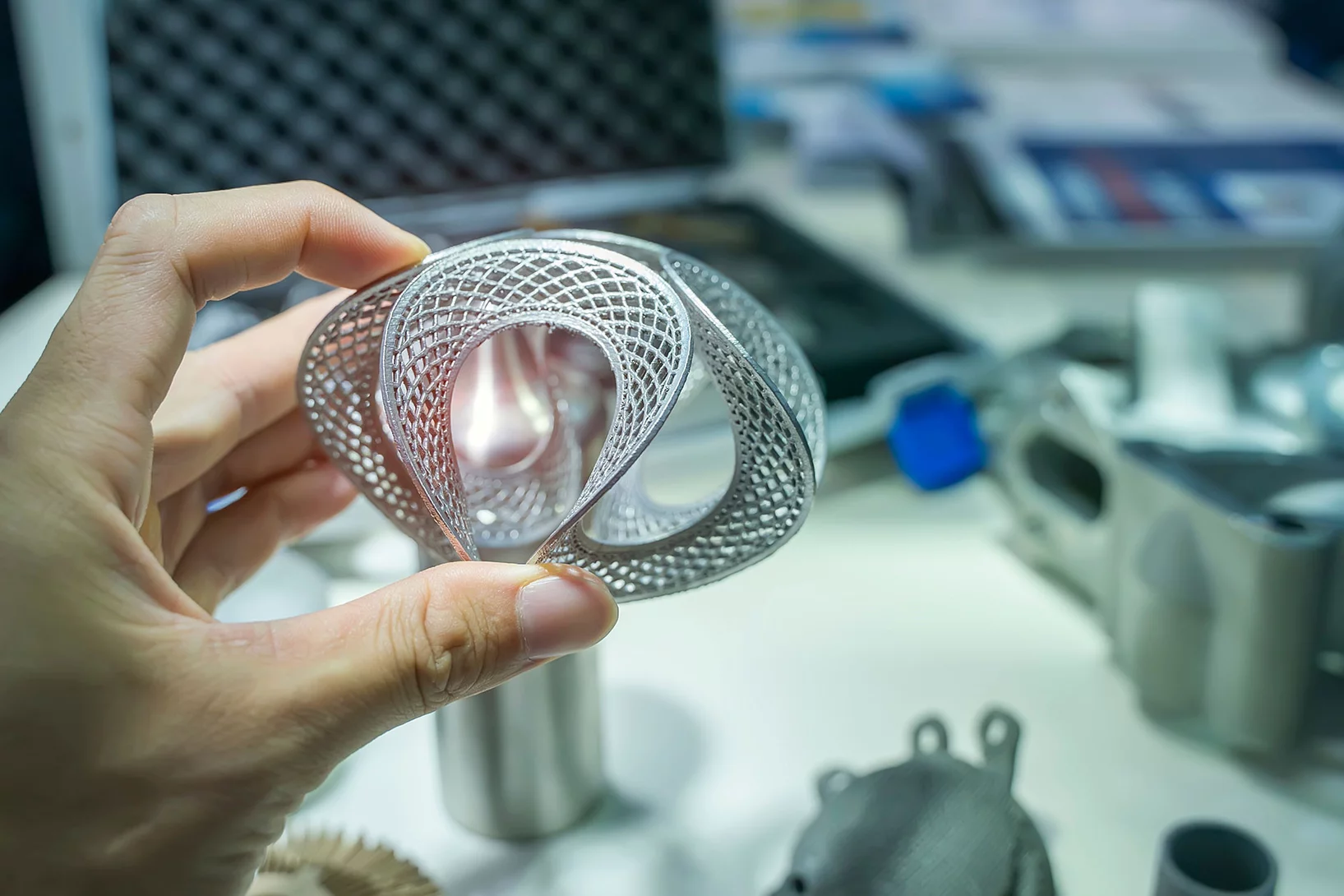A l’Institut Paul Scherrer, les scientifiques cherchent des réponses à la question essentielle des structures élémentaires de la matière et des principes fondamentaux de fonctionnement dans la nature. Ils étudient la structure et les propriétés des particules élémentaires – les plus petits composants de la matière – ou se penchent sur la question de savoir comment les molécules biologiques sont structurées et remplissent leur fonction. Les connaissances qu’ils acquièrent de la sorte ouvrent de nouvelles pistes de solution en sciences, en médecine ou dans le domaine des technologies.
Pour en savoir plus, reportez-vous à Aperçu Fondements de la nature
"Une collaboration prometteuse avec ITM dans le domaine de la thérapie contre le cancer."
Le PSI et ITM Isotope Technologies Munich SE (ITM), une société biotechnologique radiopharmaceutique de premier plan, ont conclu une collaboration pour le développement conjoint de la fabrication d'un nouvel isotope thérapeutique, le terbium-161. Dans le cadre de cette collaboration, le PSI et ITM combineront leurs technologies et leur expertise respectives dans la production de terbium-161, y compris son utilisation clinique et commerciale dans la thérapie ciblée par radionucléides pour le traitement du cancer. L'objectif est d'offrir aux patients atteints de cancer de nouvelles et meilleures options de traitement.
Le terbium-161 a été identifié comme un isotope thérapeutique très prometteur pour la thérapie ciblée par radionucléides contre le cancer en raison de ses excellentes propriétés physico-chimiques : Les capacités thérapeutiques convaincantes du terbium-161 ont été démontrées dans diverses études précliniques menées au PSI. En collaborant avec ITM, un pionnier et un acteur majeur dans le domaine des radiopharmaceutiques, la recherche de longue date du PSI sera combinée aux connaissances approfondies d'ITM pour faire progresser l'innovation dans le domaine de la thérapie par radionucléides.
Cette collaboration permet à ITM d'élargir son portefeuille de recherche et de production, en plus du lutétium-177 et de l'actinium-225, qui sont actuellement les radio-isotopes médicaux les plus couramment utilisés pour la thérapie ciblée par radionucléides et sont distribués dans le monde entier aux hôpitaux et aux partenaires pharmaceutiques par ITM.
Marino Missiroli elected Trigger Coordinator of the CMS experiment at CERN
Marino Missiroli, a postdoctoral researcher in the High-Energy Particle Physics group of the Laboratory for Particle Physics (LTP) in NUM, will join the management team of the CMS experiment at CERN as Trigger Co-Coordinator in September 2023.
Deciphering the Mechanism of Crystallization of UiO-66 Metal-Organic Framework
Zirconium-containing metal-organic framework (MOF) with UiO-66 topology is an extremely versatile material, which finds applications beyond gas separation and catalysis. By means of in situ time-resolved high-resolution mass spectrometry, Zr K-edge X-ray absorption spectroscopy, magic-angle spinning nuclear magnetic resonance spectroscopy, and X-ray diffraction it is showed that the nucleation of UiO-66 occurs via a solution-mediated hydrolysis of zirconium chloroterephthalates, whose formation appears to be autocatalytic.
La chasse au rayon du proton
0,000 000 000 000 000 840 87 (39) mètre: c’est le nombre étonnant que des chercheuses et des chercheurs au PSI ont découvert pour le rayon d’un proton.
X-rays look at nuclear fuel cladding with new detail
Micro-beam measurements at the Swiss Light Source SLS give insights into the crystal structure of hydrides that promote cracks in nuclear fuel cladding.
Laura Heyderman elected Royal Society Fellow
Laura’s nomination recognises almost 30 years of research into magnetic materials and magnetism on the nanoscale.
A deep look into hydration of cement
Researchers led by the University of Málaga show the Portland cement early age hydration with microscopic detail and high contrast between the components. This knowledge may contribute to more environmentally friendly manufacturing processes.
La Suisse en route vers le zéro net
Les institutions du Domaine des EPF mettent en commun leur expertise pour atteindre l’objectif zéro net.
Automation trifft Adrenalin
Die zwei Automatiker Abschlussklassen der BBB Baden haben am 26. April und 27. April 2023 auf ihrer Abschlussreise das Mercedes-Benz Werk und den Europapark Rust besucht.
PSI Alumni Karrieren: Eric Wasson Burns – vom Doktoranden bei NUM zum Partner im Klimateam von Deep Science Ventures
Der PSI Career Blog stellt PSI Alumni und ihre Karrierewege vor, um die Vielseitigkeit der PSI-Gemeinschaft zu zeigen, und die nächste Generation zu inspirieren. Heute mit Eric Wasson Burns, der uns von seinem Doktorat am PSI und dem Weg zum Partner im Klimateam von Deep Science Ventures erzählt.
Welcome to LXN Daniel Melvin
Herzlich Willkommen Daniel Melvin in LXN!
Apochromatic X-ray focusing
A team of scientists from the Paul Scherrer Institut, the University of Basel and DESY have demonstrated the first-ever realization of apochromatic X-ray focusing using a tailored combination of a refractive lens and a Fresnel zone plate. This innovative approach enables the correction of the chromatic aberration suffered by both refractive and diffractive lenses over a wide range of X-ray energies. This groundbreaking development in X-ray optics have been just published in the scientific journal Light: Science & Applications.
Chemikalien-Inventur 2023
Dieses Jahr wurde die erste periodische Chemikalien-Inventur am PSI mit 117 beteiligten Gruppen und insgesamt 20`000 Chemikalien erfolgreich abgeschlossen.
Industrie-Anlass: «Advanced Manufacturing» - was darf Mehrwert kosten?
ANAXAM, cross-ING und inspire AG laden interessierte Industrievertreter am 29.Juni 2023 herzlich zu ihrer Informationsveranstaltung zum Thema «AM im Spannungsfeld – was darf Mehrwert kosten?» ein.
Erfolgreiche AM-Lösungen zeichnen sich dadurch aus, dass diese durch das ganze Unternehmen verstanden und mitgetragen werden. Der durch die additive Fertigung ermöglichte Zusatznutzen – der „added value“ – muss aus der Entwicklungsabteilung über das Marketing und den Verkauf bis zum Kunden transportiert und kommuniziert werden.
Berufsbildungsausflug 2023
Die Umwelt ist uns nicht egal!
The evolution of O2 on Ir-based catalysts requires the complete oxidation of their surface to Ir+5
The evolution of O2 occurring in polymer electrolyte water electrolyzer anodes is a very slow reaction that must be catalyzed using iridium (Ir-) based materials. However, Ir is an extremely scarce metal, and thus the extended commercialization of these electrolyzers will only be possible if the amount of Ir implemented in their anodes is drastically reduced. This requires an improved understanding of the individual steps through which these Ir-based materials catalyze the evolution of O2. To shed light on this matter, in this work we studied four different Ir-based catalysts under operative conditions using time resolved X-ray absorption spectroscopy. Our results show for the first time that, despite the differences between these materials, their surfaces must systematically be completely oxidized to a +5 state in order for the evolution of O2 to proceed on them.
GDW-Cup Polymechanikerinnen und Polymechaniker
Polymechanikerinnen und Polymechaniker auf die Probe gestellt.
Informationsveranstaltung zu Karriereförderungsprogramme
Willst du dich über Karriereförderungsprogramme wie das CONNECT für Wissenschaftlerinnen an Schweizer Universitäten informieren? Dann nimm an der hybriden Infoveranstaltung am 31. Mai 2023 teil!
Meilenstein - QV-Praktische Arbeit
«Aus alt mach neu», das sind die schönen Seiten in unserem Beruf in der Gebäudereinigung.
Nodeless electron pairing in CsV3Sb5-derived kagome superconductors
The newly discovered kagome superconductors represent a promising platform for investigating the interplay between band topology, electronic order and lattice geometry. Despite extensive research efforts on this system, the nature of the superconducting ground state remains elusive. In particular, consensus on the electron pairing symmetry has not been achieved so far, in part owing to the lack of a momentum-resolved measurement of the superconducting gap structure. Here we report ...
Ultrafast structural changes direct the first molecular events of vision
The visual pigment rhodopsin plays a critical role in the process of low-light vision in vertebrates. It is present in the disk membranes of rod cells in the retina and is responsible for transforming the absorption of light into a physiological signal. Rhodopsin has a unique structure that consists of seven transmembrane (TM) α-helices with an 11-cis retinal chromophore covalently bound to the Lysine sidechain of 7th TM helix. A negatively charged amino acid (glutamate) forms a salt bridge with the protonated Schiff base (PSB) of the chromophore to stabilize the receptor in the resting state.
Rhodopsin transforms the absorption of light into a physiological signal through conformational changes that activate the intracellular G protein transducin—a member of the Gi/o/t family—initiating a signaling cascade, resulting in electrical impulses sent to the brain and ultimately leading to visual perception. Although previous studies have provided valuable insights into the mechanism of signal transduction in rhodopsin, methods that provide both a high spatial and temporal resolution are necessary to fully understand the activation mechanism at the atomic scale from femtoseconds to milliseconds. This study presents the first experimentally-derived picture of the rhodopsin activation mechanism at the atomic scale using time-resolved serial femtosecond crystallography in association with hybrid quantum mechanics/molecular mechanics (QM/MM) simulations. The results show that light-induced structural changes in rhodopsin occur on a timescale of hundreds of femtoseconds, and they reveal new details about the conformational changes that occur during activation.
Quantum disordered ground state in the triangular-lattice magnet NaRuO2
It has long been hoped that spin liquid states might be observed in materials that realize the triangular-lattice Hubbard model. However, weak spin–orbit coupling and other small perturbations often induce conventional spin freezing or magnetic ordering. Sufficiently strong spin–orbit coupling, however, can renormalize the electronic wavefunction and induce anisotropic exchange interactions that promote magnetic frustration.
When electrons dress up in light
Light – the Fifth Element of Materials Science?
Le bois, un joker pour la transition énergétique
Le rôle de la substance naturelle pour la sécurité de l'approvisionnement en Suisse
Active learning-assisted neutron spectroscopy with log-Gaussian processes
Neutron scattering experiments at three-axes spectrometers (TAS) investigate magnetic and lattice excitations by measuring intensity distributions to understand the origins of materials properties. The high demand and limited availability of beam time for TAS experiments however raise the natural question whether we can improve their efficiency and make better use of the experimenter’s time.
Quality control of future transistors: Tackling the challenge of looking at atoms buried in silicon without moving them
Tackling the challenge of looking at atoms buried in silicon without moving them
Du méthane pour stocker l’énergie
Des chercheurs du PSI et de la start-up AlphaSYNT travaillent ensemble à une solution permettant de stocker efficacement l'énergie.
Toujours à la pointe de l'actualité
À l’occasion du 35e anniversaire de l’Institut Paul Scherrer PSI, nous vous présentons deux galeries de photos.
X-rays make 3D metal printing more predictable
Insights into the microscopic details of 3D printing from the Swiss Light Source SLS could propel the technology toward wider application
Muss ich wieder bei Null anfangen wenn ich aus der Wissenschaft weggehe?
‘Wenn ich in die Industrie oder öffentliche Verwaltung wechsle, muss ich dann wieder von vorne anfangen?’ ist eine Frage, die in der Karriereberatung in der ein oder anderen Form immer wieder auftaucht. Es ist klar, dass du nachdem du so viel Zeit in deine Ausbildung und dein Forschungsprojekt investiert hast, nicht nochmal bei Null anfangen willst. Aber ist es wirklich so, dass du wieder von vorne anfängst nach einem Karrierewechsel? Und was ist so schlecht an einem Neustart?

